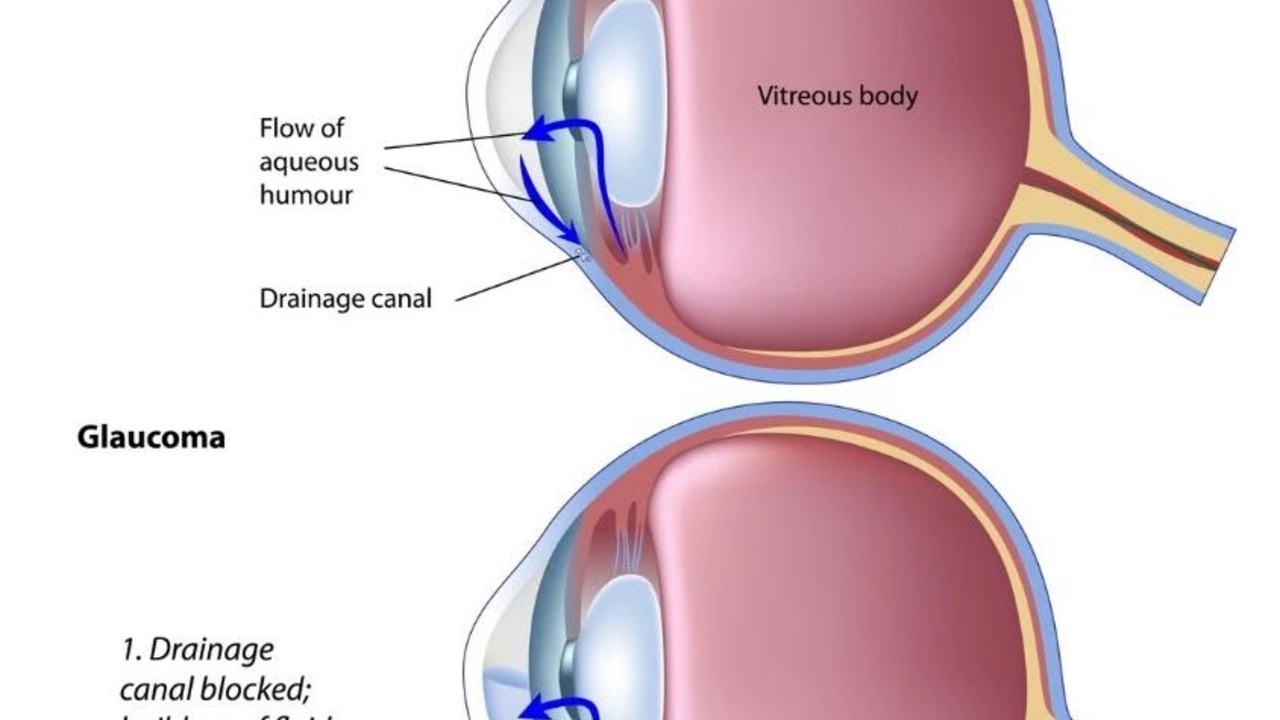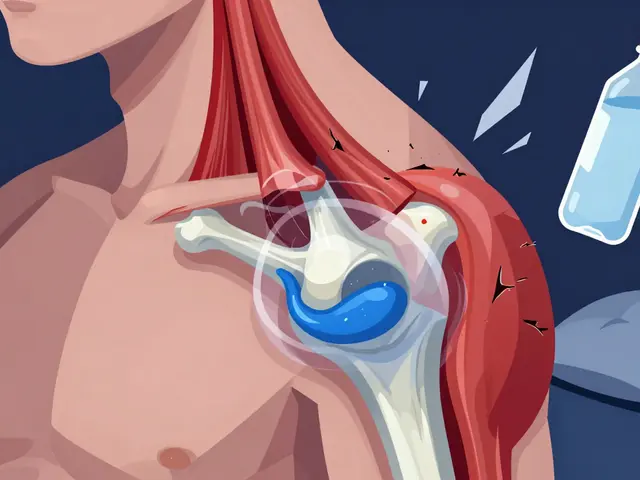
Understanding Glaucoma: The Silent Thief of Sight
Glaucoma is often referred to as the 'silent thief of sight' due to its ability to damage your vision gradually without any warning signs. It is a condition that results from increased pressure within the eye, causing damage to the optic nerve and leading to loss of vision if left untreated. This condition is one of the leading causes of blindness worldwide. The scary part is that once vision is lost to glaucoma, it cannot be recovered. That's why early detection and treatment are vital.
Current Treatment Options for Glaucoma
There are currently several treatment options for glaucoma, which include medications, laser treatment, and surgical procedures. These treatments aim to lower eye pressure and help prevent further damage to the optic nerve. However, they don't reverse any damage that has already occurred. Moreover, these treatments can have side effects and complications, and in some cases, they may not be effective in stopping the progression of the disease.
Introduction to Cabergoline: A Potential Game Changer
Cabergoline is a medication primarily used to treat disorders related to high levels of the hormone prolactin. It works by acting on dopamine receptors in the brain, which in turn helps to reduce the production of prolactin. However, recent research suggests that this medication could also have potential benefits in the treatment of glaucoma. This is exciting news, as it opens up a new avenue for glaucoma treatment.
The Science Behind Cabergoline and Glaucoma
Research has shown that cabergoline can increase the outflow of aqueous humor (the fluid in the eye), thereby reducing intraocular pressure – a major risk factor for glaucoma. Additionally, cabergoline may also have neuroprotective effects, helping to protect the optic nerve from damage. This dual action makes it a potentially powerful treatment for glaucoma.
Advantages of Cabergoline over Current Glaucoma Treatments
One of the significant advantages of cabergoline is its oral administration, making it easier and more convenient for patients compared to eye drops or surgical procedures. Moreover, its possible neuroprotective effects could not only help stop the progression of the disease but also potentially reverse some of the damage caused by glaucoma. This is something that current treatments cannot offer.
Potential Side Effects and Risks of Cabergoline
Like all medications, cabergoline can have side effects. These may include nausea, dizziness, and headaches. In rare cases, it can cause more severe side effects, such as heart valve problems. However, it is important to note that the potential benefits of cabergoline as a glaucoma treatment need to be weighed against these possible side effects. More research is needed to fully understand the safety and efficacy of this medication in treating glaucoma.
Conclusion: The Future of Glaucoma Treatment
In conclusion, cabergoline presents a promising new avenue for the treatment of glaucoma. However, we are still in the early stages of understanding its full potential and the possible risks. More research is needed, but the initial findings are certainly encouraging. It is my hope that this article has shed some light on this potential game-changer in the field of glaucoma treatment. As always, if you have glaucoma or are at risk, it's important to have regular eye exams and to discuss any new treatments with your healthcare provider.





11 Comments
Cabergoline sounds like another trendy drug to market, but the evidence is still thin. I'd be careful before buying into hype.
Wow, reading about a potential new option feels hopeful for many dealing with glaucoma 😢. It’s tough watching vision slip away, and any chance to slow it down matters. The side‑effects list makes me nervous, though-nausea and dizziness can be a real burden. Still, if teh neuro‑protective angle holds, it could change lives. Fingers crossed for solid trials! :)
Oh, great, another miracle pill to solve a centuries‑old ophthalmic nightmare. Because what the world really needed was a dopamine agonist masquerading as eye drops. The idea that swallowing a tablet could magically boost aqueous outflow is just brilliant, if you ignore basic physiology. You’ve got to love the notion that a drug for prolactin disorders suddenly doubles as a neuro‑protective agent for optic nerves. Of course, the side‑effects are just a minor inconvenience-nausea, dizziness, maybe a heart valve issue, no big deal. Who cares about a little valvular regurgitation when you might preserve a few degrees of visual field? The oral administration is a godsend for patients tired of juggling eye‑drop bottles. And let’s not forget the marketing spin: “cabergoline – the future of glaucoma therapy,” as if the future ate a kale smoothie and got confused. Researchers apparently ran a small pilot and called it groundbreaking-science at its finest. You can almost hear the applause in the conference hall whenever someone mentions “dual action.” The pharma guys will surely jump at the chance to re‑brand an old drug, because profit motives are so much more important than patient safety. Meanwhile, clinicians will be left to explain to bewildered patients why their cardiologist might now be part of their eye care team. I sincerely hope regulatory agencies have a sense of humor because they’ll need it to approve a pill with such an eclectic side‑effect profile. And hey, if it flops, at least we’ll have another footnote in the never‑ending saga of “promising” treatments that never delivered. So here’s to cabergoline-may it either revolutionize care or become a cautionary tale for future drug repurposing endeavors.
It’s encouraging to see research exploring new pathways, especially when the current regimen can be a daily hassle. As someone who’s helped patients adapt to eye‑drop schedules, an oral option would ease adherence dramatically. Remember to discuss any plan with your ophthalmologist, because individualized monitoring is key. The potential neuro‑protective effect could be a game‑changer for preserving vision. Keep hopeful but stay grounded in the evidence as it evolves. You’ve got this.
From a pharmacological standpoint, cabergoline’s dopamine agonism reduces prolactin, which indirectly influences intra‑ocular pressure regulation via vascular pathways. Studies in animal models have demonstrated increased trabecular meshwork outflow facility after cabergoline administration, suggesting a mechanistic basis for IOP reduction. Clinically, small case series report average pressure drops of 2–4 mmHg, though variability exists. The drug’s half‑life permits once‑daily dosing, improving compliance compared to multiple‑drop regimens. However, contraindications such as uncontrolled hypertension and valvular heart disease must be screened for before initiation. Monitoring protocols should include baseline echocardiography and periodic visual field assessments. Combining cabergoline with existing topical therapy could provide additive effects, but drug‑drug interactions need careful review. As more robust randomized controlled trials emerge, we’ll be better positioned to integrate this therapy into standard practice.
Cabergoline already has FDA aproved for prolactinoma, so repurposing is a no‑brainer.
The pharmacodynamics of cabergoline entail high‑affinity D2‑receptor agonism, engendering downstream cAMP modulation that may attenuate trabecular meshwork resistance. This mechanistic nuance supersedes the simplistic ocular hypotensive paradigm of beta‑blockers. Moreover, the drug’s neurotrophic index suggests a salutary effect on retinal ganglion cell viability. Clinical implementation, however, mandates vigilant echocardiographic surveillance to mitigate valvulopathic sequelae.
America invented the eye‑drop, and now some corporate snake‑oil sells cabergoline as the next big thing! 🇺🇸💥 If you think a foreign‑made dopamine drug will save us, you’re dreaming. The real heroes are the US‑based surgeons who actually fix eyes, not some pill peddlers. 😡💪
Sounds promising lets hope the studies confirm it cheers
In the grand tapestry of medical progress we often mistake novelty for salvation the allure of a new pill blinds us to the quiet wisdom of established practice 🙂 the hubris of repurposing without rigorous data is a modern tragedy we must avoid the optic nerve deserves reverence not gimmicks let us tread carefully
Another half‑baked idea that will never get past the hype.